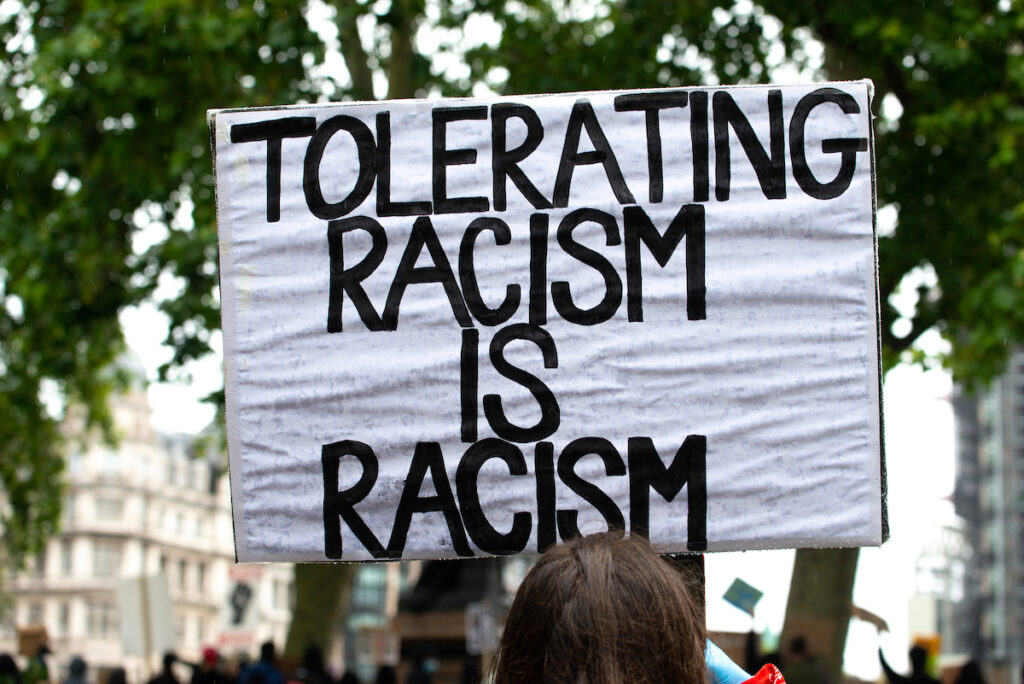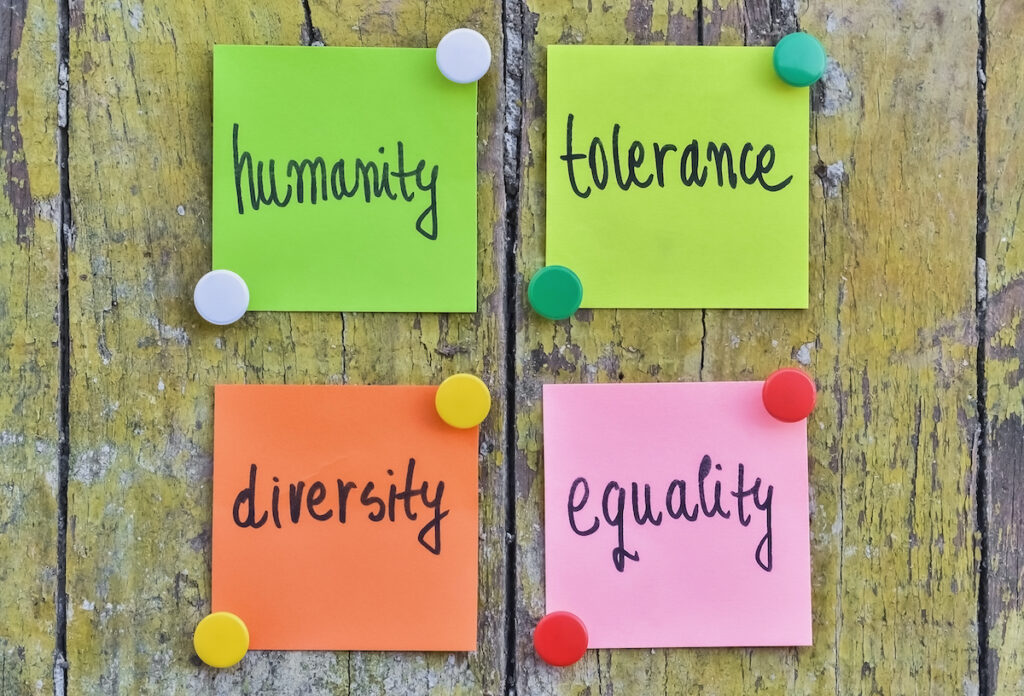
Clinical psychology is a discipline that sits within mental health services in the UK. Considered a prestigious field, clinical psychology is highly competitive with aspiring psychologists spending many years in unpaid, voluntary or low-paid roles to afford them eligibility to the clinical psychology doctorate. It is therefore exclusionary to those who cannot commit time, take on low-paid roles and overcome barriers to employment. In terms of trained clinical psychologists, the British Psychology Society (BPS) reports that members are predominantly white, female (BPS, 2015), and likely to be middle-class (Friedman & Laurison, 2019).
Clinical psychology has been subject to rightful scrutiny for its role in upholding and perpetuating racism due to the lack of non-white psychologists, its treatment of people from non-white backgrounds who are more likely to require services or be detained under the Mental Health Act, and its complicity in upholding racist structures within the field. As interventions and the current evidence base are tried and tested on people who hold privilege in various areas, people of global majority (PoGM) subsequently have worse outcomes all whilst the role of systemic oppression on mental health is not considered.
Ahsan (2020) argues that research into systemic oppression should not only include the oppressed, but also the oppressor; “the dominant group in CP [clinical psychology]”. In this paper, she attempts to explore and summarise how White, middle-class, female psychologists (WMFP) in London, UK reflect on whiteness in clinical psychology.

How psychologists use their formulations holds great power. Clinical psychology in the UK is predominantly white, female and middle-class.
Methods
An Interpretative Phenomenological Analysis (IPA) (Larkin, 2011) approach was used to conduct face-to-face semi-structured interviews with nine self-identifying white, middle-class, female psychologists (WMFP) currently working or who have previously worked in London NHS trusts on their understanding of whiteness in clinical psychology.
The interviews focus on understandings of whiteness, how it operated within services as well as in the clinical psychology profession.
The interview transcripts were themed by the people of global majority (PoGM) researcher and an academic supervisor (WMFP) from which emergent and subordinate themes were identified.
The researcher also kept a reflective diary as suggested by the IPA approach.
Results
Three superordinate themes, which are participant quotations, were identified alongside emergent subthemes that fit into the overarching superordinate themes.
“The White profession”
The first identified theme was “The White Profession” exploring how the participants perceived whiteness to play a role in clinical psychology. Under the subthemes of ‘this white bubble’ the study indicated that participants were aware of the lack of diversity within the field and processes that upheld the exclusion of people of global majority (PoGM). Although some acknowledged that this did not represent the patient population, they did not want diversification to negatively affect white psychologist recruitment. The ‘it’s not to do with individual merit’ sub-theme, highlighted that participants felt like attempts to recruit non-white trainees was a form of positive discrimination and put PoGM applicants at an advantage over white applicants. However, it was also noted that current systems of recruitment and eligibility will inevitably attract privileged white applicants.
I really want the profession to be more diverse, but I don’t want it to happen at the expense of really good potential white psychologists.
“Therapy is a White idea”
The second theme “Therapy is a White idea” explored how white, middle-class, female psychologists (WMFP) understood how their whiteness might influence therapy. It was apparent that these participants viewed therapy in the global North above and beyond non-western approaches to mental health without acknowledging the role of social determinants on mental health. The limitations of expanding the use of current therapeutic approaches to PoGM was also reflected in the sub-theme of “white middle-class families end up getting more”. Participants acknowledged the worse outcomes and differing referral pathways that racialised communities experience like increased detaining, and over-medicating compared to white middle-class families. Ahsan argues here that assimilating experiences impacts on perceived risk, negatively impacting on PoGM which leads onto the second sub-theme of “you’re not gonna understand this because you’re white”, with PoGM potentially benefiting from a PoGM clinical psychologist whilst also acknowledging the limitations and constraints of existing and working as a PoGM within a white system.
White, middle-class are not going to be the kind of families who’d ever end up being referred to social care… there is a sense of knowing how to use your power and an understanding of how the system works.
“We don’t see ourselves as White”
The third and final theme identified was “We don’t see ourselves as White”. Participants reflected on individual whiteness and structural whiteness. They discussed not being forced to reflect on race when thinking about identity in comparison to PoGM in the sub-theme “not wanting to identify with it”. On the other hand, participants expressed avoiding situations to explore race within clinical psychology as a defence mechanism and fear of addressing whiteness which can impose restrictions on the impact of their whiteness in the clinic and assuming PoGM clinicians would be better placed to deal with the topic of race, reflected in the “I’m often treading on eggshells” theme. The final subordinate theme of “I am committed to keep on thinking about this stuff” as recognition of responsibility to both professionally and personally reflect on their whiteness and anti-racism within clinical psychology.
We don’t see ourselves as white, do we really? I don’t think we’re forced to look in the mirror. It is never really pointed out to you. Whereas if you are black or brown, your experience is- you are reminded of it.
We shy away from power and the responsibility that comes with that. We have the knowledge to stick heads above the parapet for some things, but not this. We need to do more.
The findings of this study imply that white clinical psychologists are both aware of their positionality from within the profession and initially gaining access. WMFP’s acknowledge the power that they hold in the therapy room which in turn impacts the fact that therapy benefits white patients significantly more than PoGM. Whilst acknowledging these downfalls in their positionality, they are committed to doing more by reflecting on their whiteness in the space and improving access, therapy and outcomes for PoGM.

The findings of this study suggested that often clinical psychologists believe that being White is a disadvantage in accessing the profession and support that specifically Black applicants benefit from the need for diversification acknowledged by the BPS.
Conclusions
It is evident from the findings that systemic change is needed including academic and clinical recruitment addressing the representation of PoGM alongside White professionals. This is required across the board and not just at entry-level. It is thus essential to allow for diverse leadership and voice for PoGM to feel safe and thrive as clinical psychologists.
Ahsan argues that lived experience must be valued over clinical and academic expertise and ensuring representation is present in interview panels. White applicants should be challenged on their views of oppressive systems and their intersecting impact on mental health prevalence. PoGM must have the power to change and challenge the norms and White psychologists must commit to anti-racist practice throughout their careers as essential rather than optional. Clinical psychology must move beyond traditional Western psychology and consider alternative approaches to healing in training and practice as well as providing space for alternative forms of knowledge and communication such as music and poetry.
The author concludes by stating that psychologists must challenge their individual avoidances of whiteness and avoid centring themselves in the discourse. Clinical psychology in the UK must face and acknowledge that anti-racist practises are not short-term trends but an ongoing journey of reflection and discomfort that psychologists have an obligation to endure.
Part of the psychologist’s anti-racist work is becoming embodied: staying with the tightening throat and chest, recognising that this is a healthy place to return to meet an opening for change.
Anti-racism in clinical psychology is essential if we are to address the disparities within mental health services in both access and therapeutic outcomes. Personal investment from psychologists must involve reflection and committing to change and re-balance of power. Systemic investment is needed in recruitment and retainment through not only representation but devolving power hierarchies rooted in white supremacy and embedding lived experience expertise in the field.

Anti-racism in clinical psychology is essential if we are to address the disparities within mental health services in both access and therapeutic outcomes.
Strengths and limitations
This paper addresses a really important topic and the author has braved the storm in understanding how whiteness plays out in clinical psychology. There is a huge strength in this and the methodology used holds great value in the qualitative field. The paper is unconventional in the way that it practises what it preaches and recommends for clinical psychology; moving beyond the norm to ask uncomfortable questions. It highlights front and centre how historical studies about oppression and White supremacy are replicated in clinical psychology today.
There is a limitation in recruiting a small sample of White, middle-class, female psychologists (WMFP) from a diverse area of London as participants have likely been exposed to people of global majority (PoGM) more and likely to have received more diverse training than clinical psychologists outside of London would have. However, it is important to acknowledge that this is also a strength as the participants were able to use these experiences as context for exploring their whiteness as well as in the clinic with PoGM.
The paper only reports on three main themes and I would have expected or liked to have seen more of the emerging themes alongside more quotes. The paper alluded to several different quotes in the text and the paper would benefit from having more context to these. E.g. Unconscious defensive reactions against these processes create self-imposed limits to engaging with one’s white embodiment and, as participants experienced, can result in fearful paralytic silence (e.g. “It stops me from getting into the conversation” – Jo), rather than justice (Kinouani, 2020).
The author mentions keeping a diary throughout the research process and I think the reader would benefit from a researcher’s reflection within the paper of her positionality as a PoGM and her relationship with whiteness and how this may have impacted the data collection and analysis. The impact of the power dynamic between the WMFP supervisor and PoGM researcher on the analysis and study would also be interesting to reflect on.
The paper practices what it preaches in that it moves beyond the norm and incorporates research beyond mental health that has contributed and contributes to perpetuating systems of oppression towards PoGM in clinical psychology today. Reflection is important in any research including qualitative research. Including more reflection would highlight how WMFP supervision and PoGM researcher dynamics impact a study like this.

The paper practices what it preaches in that it moves beyond the norm and incorporates research beyond mental health that has contributed and contributes to perpetuating systems of oppression towards people of global majority (PoGM) in clinical psychology today.
Implications for practice
This paper highlights that whiteness within clinical psychology is complex and has an impact on psychological practice especially people of global majority (PoGM). This is a topic that many have discussed but never explored especially through the lens of whiteness. I think it has implications for both practice and future research. I’d personally encourage future research to approach race relations similarly and reverse the onus onto white people to reflect and challenge their views as opposed to centring the research on those oppressed by systems.
Through my own lived experience and as a peer researcher, I have seen research centre PoGM as the participants in an attempt to find out more about access and therapeutic outcomes to improve services. However, this is one of the first studies to explore how whiteness may be impacting outcomes and whether certain factors that may contribute to mental health problems are simply being glossed over. Staff play an important role in the implementation of therapies and services, so it is vital they are consulted. Nonetheless, it is vital we also explore and challenge how their views, avoidances, and experiences may impact implementation and outcomes.
In my PhD project looking at migration, social determinants, and psychosis, I am going to be exploring how social determinants post-migration impact psychosis risk using a mixed-methods approach looking at clinical data collected by professionals as well as qualitative data from the perspective of service users. These experiences, social determinants and psychosis risk may differ from ethnicity to ethnicity. It is important that the field is open to addressing these experiences and does not shy away from their discomfort in these situations.

Future research on race and mental health should take note and centre how whiteness and white professionals, in particular, contribute to access, therapy and outcomes of people of global majority (PoGM). Research should not diminish the power that staff in leadership hold and how far-reaching this impact can be.
Statement of interests
Humma Andleeb knows the first author (Sanah Ahsan) and has been on panels with her previously, but was not involved in this study in any context.
Links
Primary paper
Ahsan, S. (2020). ‘Holding Up the Mirror: Deconstructing Whiteness in Clinical Psychology‘, The Journal of Critical Psychology, Counselling and Psychotherapy, 20 (3), pp. 45-55.
Other references
British Psychological Society. (2015). Division of Clinical Psychology. (Accessed 20th October 2021)
Friedman, S., & Laurison, D. (2020). The Class Ceiling:Why it pays to be privileged. Bristol: Policy Press.
Larkin M, Thompson AR. Interpretative Phenomenological Analysis in Mental Health and Psychotherapy Research. Qual. Res. Methods Ment. Heal. Psychother. A Guid. Students Pract., 2011. doi:10.1002/9781119973249.ch8.
Photo credits
- Photo by Vince Fleming on Unsplash
- Photo by Amine Bashir on Unsplash

Neurogenic dysmentation with disordered states of consciousness, so-called psychosis, is a neurological symptom that can develop from serious illness (as in “delirium) or from neurodevelopmental disorders like so-called schizophrenia and bipolar. There are no social determinants of this neurological symptom. The study of this neurological symptom has no place in psychology. The domain of neurological symptomology is medicine. Psychology and psychosocial psychiatry are not medicine.